Plum trees produce beautiful flowers that later develop into delicious purple fruits for you, although they have a huge commitment, and seeing something wrong can be a real fear if you trust their crop every year. Plum tree problems are many and varied, with airborne viruses, bacteria, and fungi spores being distributed by spraying water. Plum trees are one of the more flexible fruit trees, and if they are given good care, they will probably not be affected by pests and diseases. Let’s check out the 18 common Plum tree problems below.
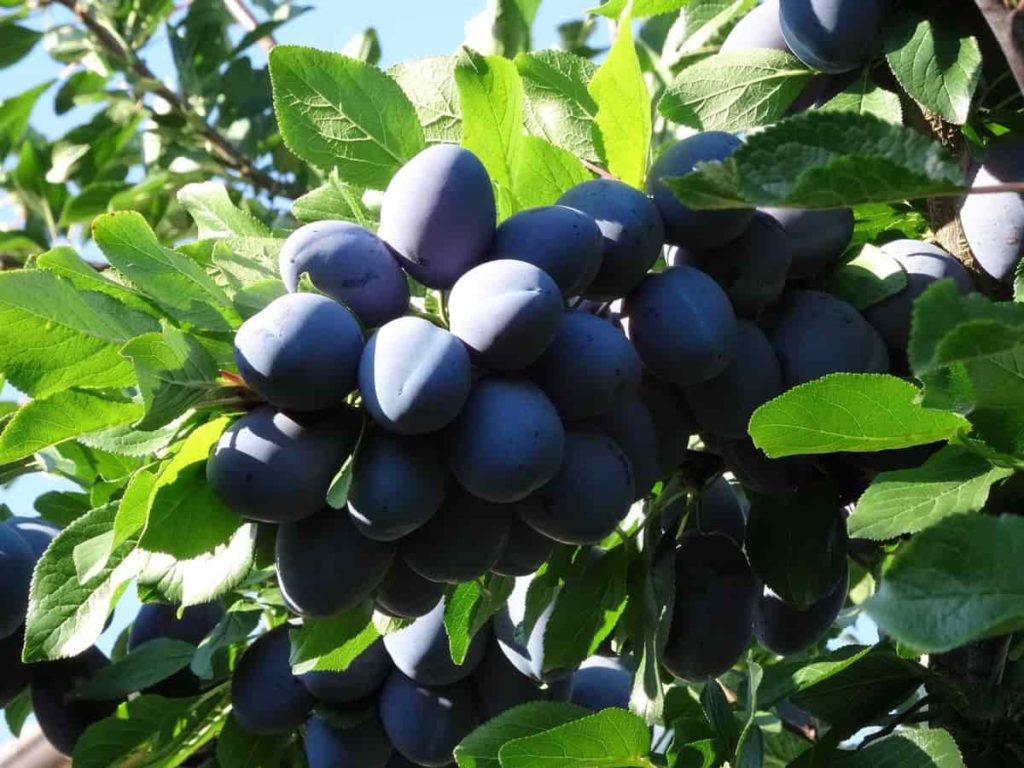
Common Plum tree problems
The plum tree has no fruit
The blooms will fall very quickly due to severe cold during flowering, and a Plum tree fails to bear fruit. Freezing temperatures will also kill flowers before blooming. Without flowers, you will have no fruit. Pests chewing the terminal ends, shoots, and flowers will also yield no fruit on Plum trees. Excess nitrogen fertilizer promotes the growth of leaves and can reduce fruit.
One of the common causes of Plum tree problems is the lack of pollinators. Plums themselves are not productive, and the transfer of pollen requires another species of the same species nearby. It is done with the help of bees, kites, and other pollinators. Pruning at the wrong time removes flowers and then buds needed for fruit.
Solution – You can take steps to prevent the problem of Plum trees not having fruit. Remove weeds and grass away from the base of the tree. Provide proper fertilizing programs for good irrigation and fruit trees. Fertilizers higher in phosphorus will help in blooming and bearing fruits. When small, trim the trees to create a strong scaffold and minimize growth. Pruning is done when the tree is inactive and before buds are formed.
Do not plant Plums where the tree will be shed or compete with other tree roots for resources. Plum trees are one of the least hardy plants of winter and should not be grown in zones where the temperature is -26°C. Cold temperatures kill flower buds, one reason the Plum tree fails to bear fruit. Heavy trees cannot produce fruit next year. Fixing fruitless Plum trees sometimes requires patience, and you will soon enjoy the excellent, sweet fruit again.
Plum leaves turning red
Rust and root rot are the common reasons Plum leaves turn red. Rust is the cause of red Plum leaves, a fungal disease that results in shiny yellow spots on the leaves with red spores underneath them.
Solution – You can treat it by spraying monthly fungicides that can lead to harvesting if the outbreaks occur early or after the harvest if the outbreak occurs later.
Phytophthora root rot can manifest itself in colorless, sometimes red leaves. Red leaves can only start on one branch, then spread to the rest of the tree. Deep root crowns with red leaves, sap from the stem, and brown spots on the bark.
Solution – To fight it, dig up the soil around the tree and let the root crowns dry.
Another possible cause of red Plum tree leaves is bacterial leaf spots. It starts as black or brown spots under the leaves that eventually disintegrate, leaving a hole surrounded by a red ring.
Solution – Pruning your branches back for better air circulation. Apply the prescribed copper in the fall and spring.
In case you missed it: Best Fertilizer for Plum Trees: Homemade, Organic, Compost, Natural, Liquid, When and How to Apply
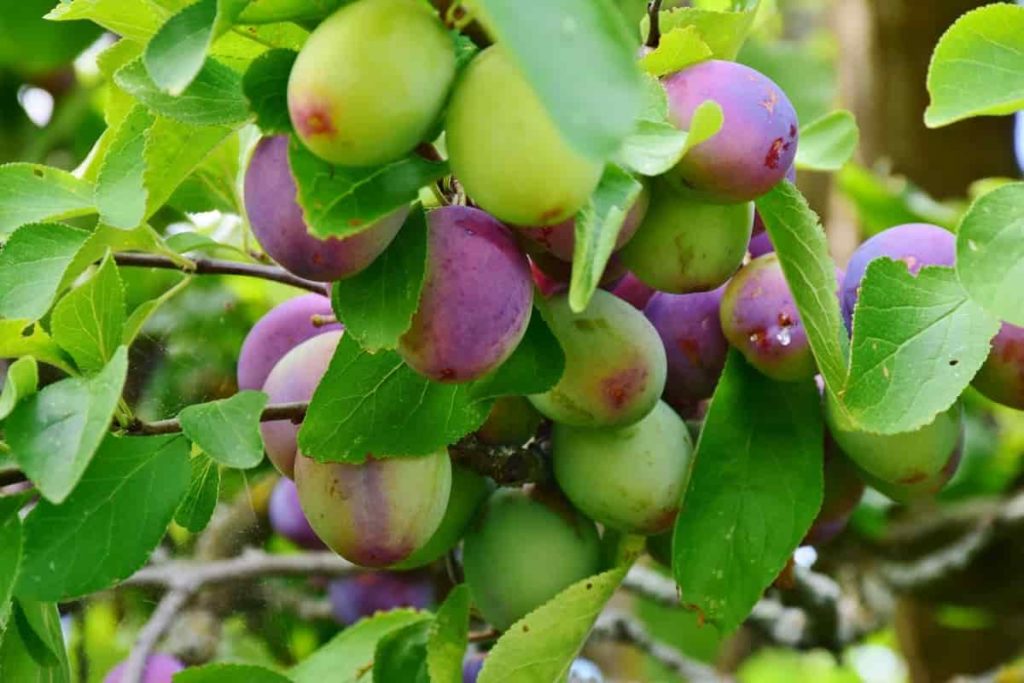
The Coryneum blight can appear as small red spots on young leaves that eventually disintegrate, leaving a hole in the leaf.
Solution – Spray with fungicides. Destroy all dead leaves and any other debris to prevent the spread of the disease.
Wilted leaves
Wilted leaves are on the upper Plum tree because it does not get enough water. It mostly happens with containers and Plum trees in new plantings. Suppose you see this, water more often and move the trees in containers to a shadier place.
Solution – The solution is to stop watering the soil until it dries.
Yellow leaves on a young Plum tree
Water
When a tree is under drought stress and lacks enough water for healthy growth, its leaves are scorched and yellowed by cladoptosis. It is a defense procedure that allows the tree to conserve water by stopping water supply to its leaves. As the water supply decreases, leaves turn yellow and fall off the tree. Heat stress usually occurs during a hot, dry summer and causes symptoms like drought stress.
Solution – You should water the soil when dry.
Fertilizing
Plum trees should not be fertilized when you plant them. The fertilizer shock at the time of planting is very harsh for a young, newly planted Plum tree and can burn leaves, making them yellow and brown.
Solution – Wait until next spring (or late winter) when leaf buds start to bloom before applying 1 cup of 10-10-10 fertilizer in diameter around each tree. In mid-May and mid-July, add 1/2 cup of ammonium or calcium nitrate to 2 feet in diameter around each tree.
Herbicide injury
Chemicals that kill plants, usually weed killers, can damage untargeted plants through chemical flows or volatilization. Yellow leaves are the result.
Fungal diseases
Verticillium Wilt
A Verticillium Wilt symbolizes yellow leaves that retain some green color with veins. Cut a branch and look in. If you see the streaking under the bark, the culprit is probably Verticillium Wilt.
Solution – The fungal pathogen that causes the disease can remain dormant in the soil for up to 10 years to attack young or established trees. There is no cure for this disease.
Armillaria root rot
If a young tree is planted in an area where drainage is poor, at times of unusually high rainfall, or if you have overwatered it, the roots may be affected by the armillaria root rot.
Solution -Like the verticillium wilt, fungi pathogens last long periods in the soil, and there is no cure.
Peach leaf curl fungus
Fungal pathogens cause the curl of Plum leaves to yellow, ripen and curl the affected leaves.
Solution – It is too late to apply fungicides if you notice these symptoms. As a precautionary treatment, you can apply fungicides twice a year in late fall/winter when the tree enters inactivity and leaves buds to bloom shortly before they bloom in late winter/early spring.
Peach mosaic virus
Plum trees infected with the peach mosaic virus are usually slow to get out in spring. When leaves emerge, they are small, yellow, and shiny.
In case you missed it: Plum Gardening For Beginners, How to Start

Solution – There is no treatment for plant viruses; remove the infected tree immediately.
Droopy Plum leaves
Nutrient deficiency
Nutrient deficiencies such as boron, iron, manganese, sulfur, or nitrogen can help the Plum tree leaves fall. Stone fruit trees need nitrogen, potassium, and phosphorus.
Solution – The foliar application of seaweed extract, compost tea, or fish emulsion is also very good.
Inappropriate water methods
Proper watering is to prevent leaf drops.
Solution – The newly planted Plum trees should get 6-8 inches of water in the soil weekly two to four times during the fall, and You should place organic mulch around the tree to help maintain water.
Diseases
Bacterial leaf spot or shot hole disease can also affect your Plum tree and cause leaf drops, sometimes severe. Many fungal diseases can also contribute to the leaves lost on the Plum tree, including Armillaria root and Crown rot, Phytophthora, and Verticillium wilt.
Solution – Sanitation, removal of infected leaves, and fungicides can be applied after the petals fall. You can apply a mixture of copper sulfate and lime after the harvesting.
Pests
An attack by spider mites or aphids can also result in Plum tree leaf drops.
Solution – A strong water spray can reduce the aphid’s population, and you can apply a dormant oil spray at bud swell.
Plum tree fruit drop
Fruit drops in Plum trees can be completely normal or result from poor pollination, dehydration, pests, or disease.
Normal
It is normal for your Plum tree to drop some raw fruit in summer. Plum trees often produce heavy loads of fruits; thus, the tree relieves itself of excess fruits to invest its energy in developing the remaining fruits.
Solution – Thin the fruit more than 30 days after the tree blooms. Ensure that the fruits are about 6 to 8 inches apart to allow plenty of space to grow. Monitor your tree as soon as the fruit is ripe. Thin the fruit even more if it seems that there is a risk of a branch breaking.
Poor pollination
Poor pollination is the common reason for fruit drops from a tree. Poor pollination can be caused by a lack of bees and pollinators around the tree. Pollinating Plum tree flowers for flies can also be very cool.
Solution – The temperature needs to be at least 10°C for successful pollination; the rainy season can also prevent flies from becoming active enough to pollinate trees.
Pests and diseases
Plum trees suffer from many pests and diseases that can contribute to fruit drops with the tree’s fall. Some other diseases may not cause the fruit to drop from the tree but may cause injury or damage to the Plum. Some pests affecting your Plum tree include stink bugs, oriental fruit moths, and peach tree borer.
In case you missed it: Plumeria Gardening For Beginners, How To Start
Solution – You should treat by using suitable fungicides.
Diseases
Armillaria root rot
Common symptoms include poor terminal growth and small leaves. The entire tree suddenly falls in the middle of summer. Trees in gardens usually die in a circular pattern, affected trees often have a fan-shaped white fungi mat that grows between the bark and wood of the crown.
Solution – Once the tree is affected, there is no cure, and you should remove it; the fumigants do not properly control the fungus in the soil. Do not put Apricots in the newly cleared forest or the site of the old gardens with the history of the Armillaria.
Brown rot
The death of young flowers and associated twigs and leaves. Small tan cankers with deep margins on their twigs and gummy are emitted at the base of flowers. The mass of brown spores on flowers in humid conditions; infected fruits usually exhibit rapidly spreading brown rot but can also take the form of small necrotic spots.
Solution – The most effective way to control brown rot is using appropriate protective fungicides when sensitive flower parts are exposed or applied after a wet period. Sprinkler irrigation avoidance protects leaves and flowers from wetness that promotes the disease. Cultural control methods include removing the mummified fruit from the tree, cutting off infected twigs, and reducing plant stress by providing adequate water and fertilizer.
Powdery mildew
Circular patches develop white powdery growth, itching on fruit, and dry spots. White powdery growth on leaves in fall.
Solution – The management of powdery mildew depends on applying appropriate fungicides and cultural methods that promote good wind circulation around tree canopies to reduce moisture.
Rust
Pale yellow-green spots on the surfaces of both upper and lower leaves that are angled in shape and bright yellow. Spots at the lower leaf surface produce orange-red spores.
Solution – You can prevent rust by spraying trees with protective fungicides. The request is usually made one, two, and three months before harvesting in areas where there is a risk of an outbreak of the disease in the early season and in areas after harvest where the disease is less disturbing or emerges after the season.
Bacterial canker
The cankers spread upwards and form areas submerged in winter; if the pathogen enters the inactive buds, they can be killed or usually opened in spring before falling in early summer; infected buds can be without symptoms.
Solution – Ensure that a suitable Plum type and rootstock are selected based on geographical location and environmental conditions to protect the tree from the stress that affects the tree before the disease. Spray the trees with protective copper spray before flowering. Prune trees in early summer to reduce the chance of infection.
Crown gall
The galls first appear as white, fleshy swelling that grows rapidly and becomes tan or brown. The galls are usually formed in the wound site, and next new galls are formed adjacent to the old ones.
In case you missed it: Growing Plumeria (Champa/Frangipani) at Home
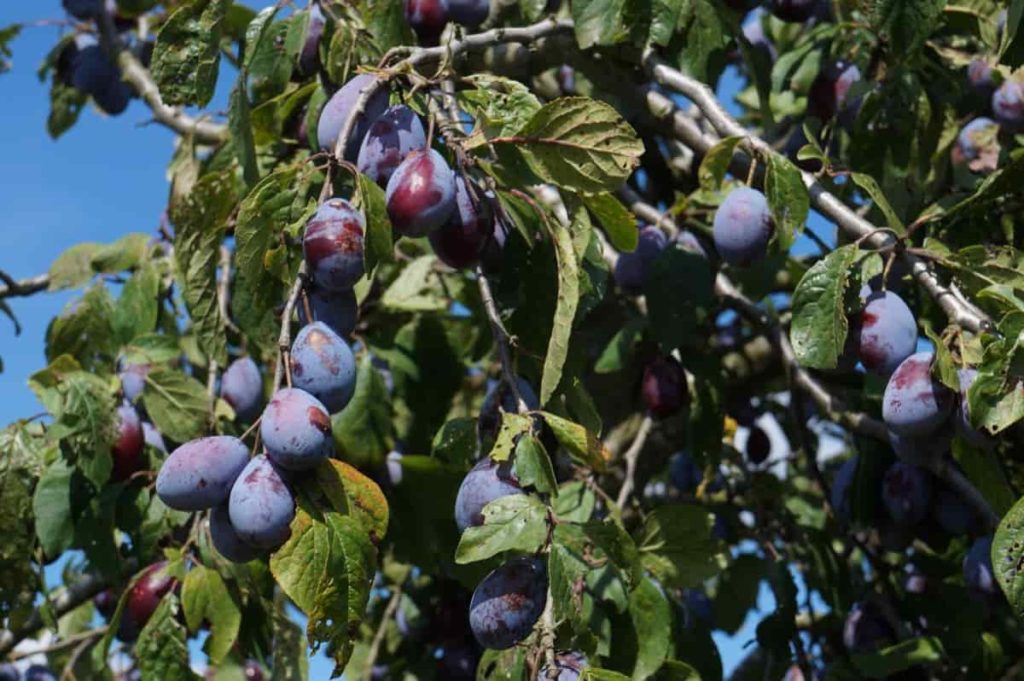
Solution – Applying only certified, disease-free materials and plant Plums to well-draining soil, rotating affected fields with non-hosts before planting Plums, and using good sanitation methods.
Pests
Plum Curculio
Plum Curculio is a weevil that affects Plum trees, destroys fruit, and causes it to fall prematurely. The most distinctive symbol of curculio infestation is the crescent-shaped mark on the fruit. You will also see fruit falling from the tree and can see worms or beetles in branches.
Solution – Remove the fallen fruit from the area daily to eliminate Plum curculio infestation. Spread a sheet or a trap on the ground and knock the tree hard with a rake to remove the remaining larvae. Remove them from the area. Repeat daily for three weeks.
Leaf curl Plum aphids
Aphids attack tree leaves, causing them to die.
Solution – You should apply commercial pesticide or citrus oil as soon as you see the infection. You can spray your trees with your hoes on a jet setting, which will knock most of the aphids.
Mites
Many types of mites can affect Plum trees. Depending on the type of mite, the symptoms can vary, affecting your tree. But some top signs of mite attack include mottling on leaves and discoloration.
Solution – To remove mites before affecting the tree, apply commercial bug spray or insecticidal soap.
Scale
Scale pests are some of the most common pests affecting Plums and many types of fruit trees. It is very easy to recognize the scaling attack because of how dramatically they affect the branches of fruit trees. You probably need to treat scale insects if you see branches and leaves breaking into large brown lumps or spots.
Solution – Use pesticides made for scale pests or aphids. You can manually remove them from your hands or toothbrush and spray them onto the tree to knock down the rest of the pests.
Plum sawflies
Plum sawflies are disappointing pests, as they completely ruin the fruit crop sometimes for the whole year. Recognizing the Plum sawfly attack can be difficult unless your eyes are sharp. Generally, a small brown spot or pinprick is just outside the cheap fruit. You may also see gum being released from the stem, which is the response to stress from the tree itself.
Solution – Plum trees are treated a little deeper for the sawflies, as it involves getting rid of all the affected fruits and burning them. Unfortunately, it will not solve any problem that has already started, but it will also prevent next year’s crop from being affected.
In case you missed it: Hydroponic Strawberry Gardening Techniques, Tips
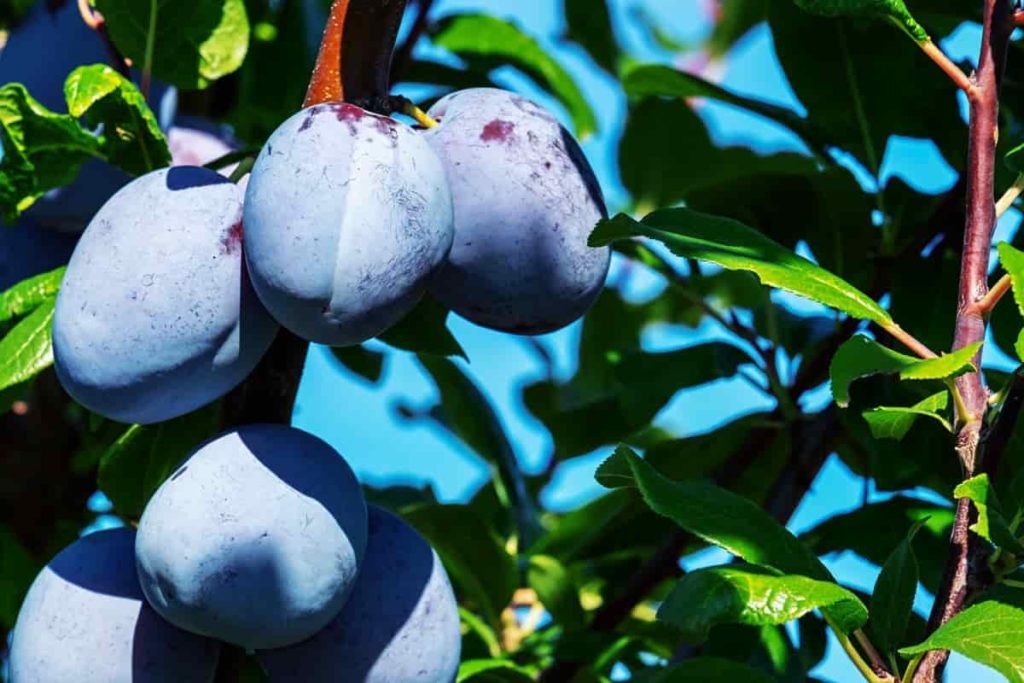
Thrips
Thrips are small, winged pests that are common in gardens and yards. They can affect many plants, including Plum trees, which eat leaves, branches, and fruits. They can ruin fruit crops as they puncture the skin and suck from within. The damage caused by the thrips includes white or silver spots on leaves or holes in the fruit. This is because the thrips suck nutrients from the plant, robbing its color.
Solution – If you notice signs of a thrip attack on your Plum tree, start by removing any bad fruit and leaves. You can usually get rid of the branches by spraying mild insecticidal soap on them.
Conclusion
Many diseases that affect Plum trees and fruit are caused by fungus. You should remove and eventually destroy diseased branches and fruits. Cutting your tree in winter can also help overcome the problem. Fortunately, most Plum trees thrive with basic care. Just make sure you regularly check for their disease and pest symptoms. You should act quickly and save your tree by using the above-mentioned solutions to get a healthy Plum tree.
- Growing Gold: Essential Techniques for Planting Pineapples
- How to Make Kalanchoe Plant Bushy: Home Remedies and Solutions
- 11 Reasons Why Your Gardenia is Not Blooming: Home Remedies and Solutions
- Eco Elegance: The Guide to Designing a Drought-Tolerant Landscape
- Gardening on a Slope: Strategies for Hillside Landscaping
- Nourish and Flourish: Top Organic Mulches for Thriving House Plants
- Everything You Want to Know about Indian Mogra Flower: Discover Uses and Growing
- Green Thumb Success: Expert Tips for Cultivating Greenhouse Pumpkins All Year Round
- Maximize Growth & Flavor: The Ultimate Guide to Companion Planting in Herb Gardens
- How to Control Rhododendron Problems Naturally: Home Remedies and Organic Ways to Fix Them
- Natural Magic: The Remarkable Benefits of Cinnamon for Plants
- Best Steps to Revive Dying Tulip with Natural and Organic Treatment
- 10 Reasons Why Your Angel Trumpet is Not Blooming: Remedies and Treatment
- How to Fix Periwinkle Leaf and Flower-Related Problems: Natural Remedies and Solutions
- How to Fix Zinnias Leaf and Flower Problems: Discover Natural and Home Remedies
- Organic Steps to Induce Lemon Tree Flowers: A Comprehensive Guide
- Bloom Booster: Crafting the Perfect Homemade Bougainvillea Fertilizer
- Optimizing Growth: A Guide to Applying NPK Fertilizer for Potted Plants
- 10 Best Homemade Fertilizers for Rubber Plant: DIY Recipes and Application Method
- How to Boost Female Pumpkin Flowers: Effective Steps for More Flowers and High Yields
- Transform Your Indoor Garden: Top Benefits of Pink Salt for Houseplants
- 10 Best Homemade Fertilizers for Peacock Plants (Calathea): Easy DIY Guide
- Unlock Blooms: 9 Reasons Why Your Potted Chrysanthemum is Not Blooming
- 8 Reasons Why Your Potted Hibiscus is Not Blooming: Fix it with Simple Solutions
- Unlock Blooms: 9 Key Reasons Your Potted Frangipani Won’t Flower
- 10 Reasons Why Is My Ice Plant Not Blooming: Remedies and Treatment
- 10 Reasons Why My Potted Hydrangea Not Blooming: Treatment and Remedies
- 10 Reasons Why is My Wisteria Not Blooming: Remedies and Treatment
- 10 Reasons Why is My Goldfish Plant Not Blooming: Remedies and Treatment
- Maximize Your Space: Ultimate Guide to Balcony Gardening with Grow Bags
- 10 Reasons Why Your Iris is Not Blooming: Remedies and Treatment
- 10 Reasons Why Your Anthurium Plant is Not Blooming: Treatment and Remedies
- 10 Reasons Why Your Aquaponic Plants Are Not Flowering: Remedies and Treatment
- 10 Reasons Why Your Agapanthus is Not Flowering: Remedies and Treatment
- Ultimate Guide to Brown Turkey Fig: Steps to Growing Brown Turkey Figs
- How to Grow Acai Berry: Propagation, Planting, and Care
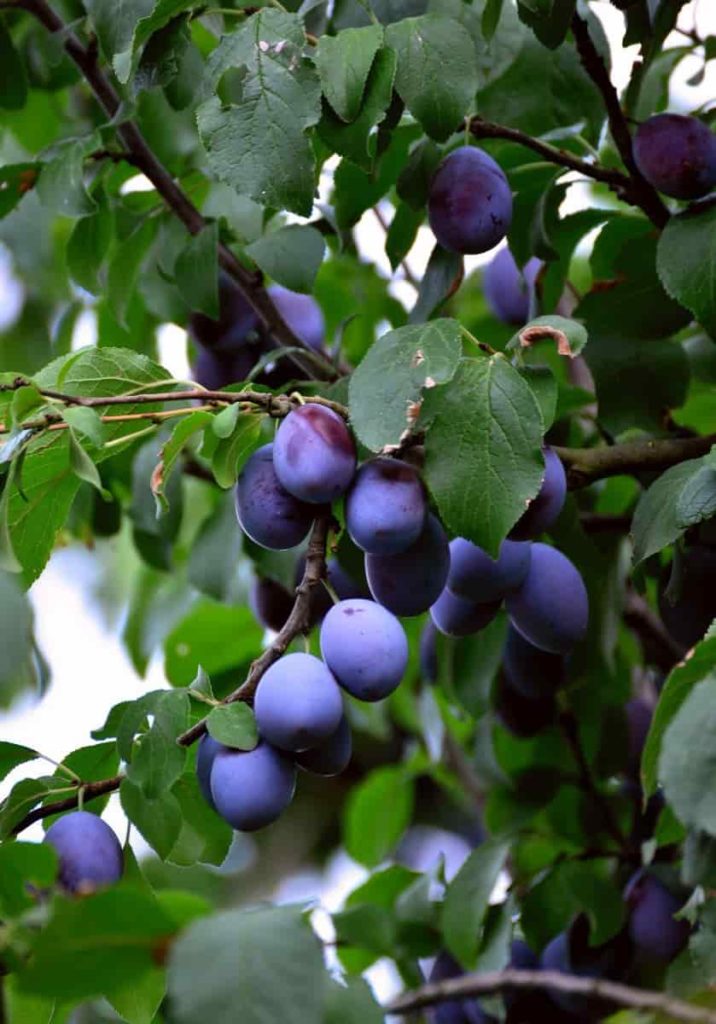
My plum tree is a 4 varieties grafted onto a single stock. It was purchased that way from a hurry like that. Anyway. It has produced a lot of fruit every year. Except for this year. Not even a single blossom. Any idea what’s wrong. It looks perfectly healthy.